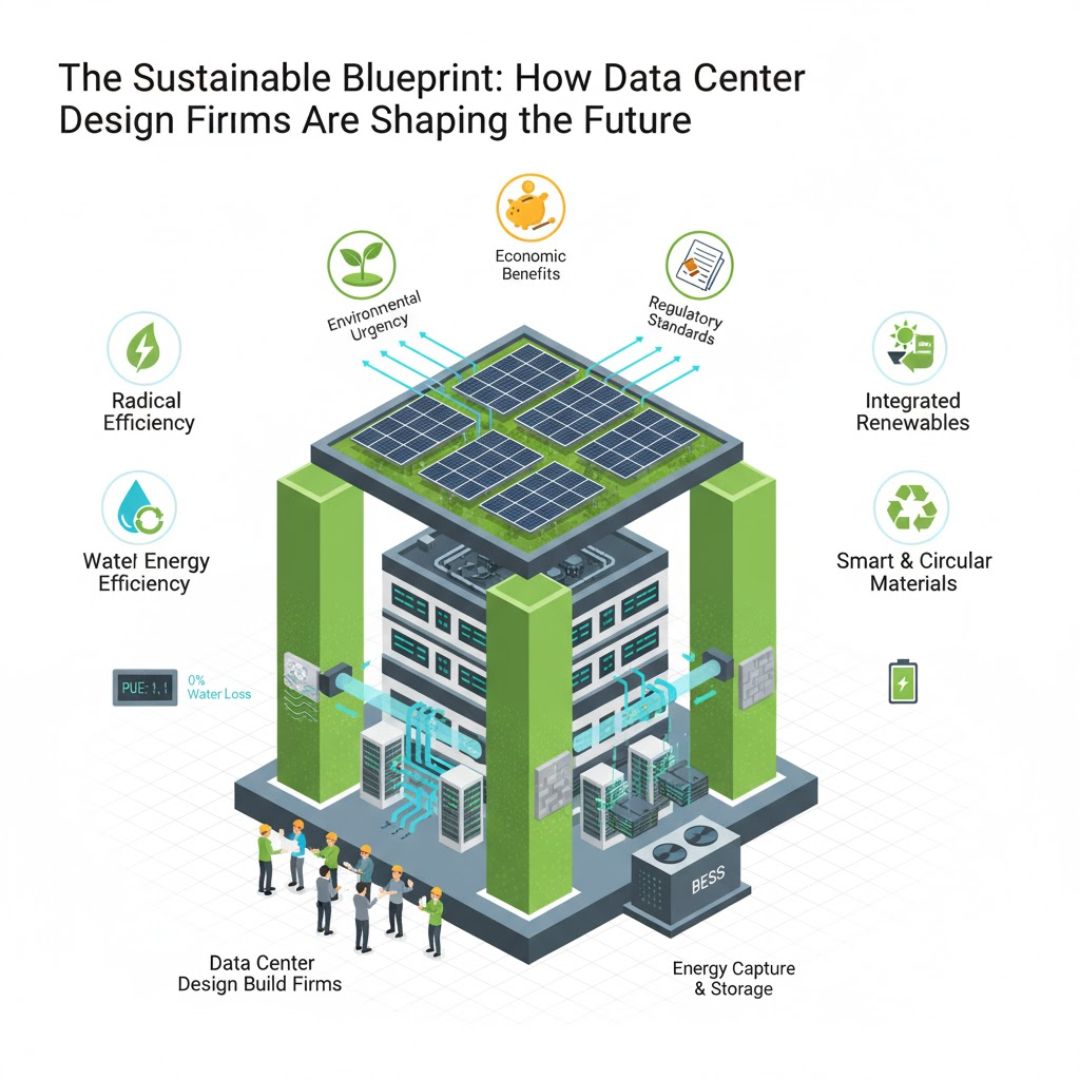We live in a digital-first world. Every time you stream a movie, save a file to the cloud, or use an AI tool, you are relying on a physical facility somewhere: a data center. As our digital needs grow exponentially, so does the demand for these facilities. But this growth comes with a massive responsibility.
In the past, the main goal of building a data center was simple: maximum uptime and raw power. Today, that focus has shifted significantly. Sustainability is no longer just a nice-to-have “bonus” feature; it is now a central pillar of modern construction.
Why the sudden shift? It’s driven by a combination of environmental urgency, economic smarts, and forward-thinking innovation. Let’s explore why building green is now the gold standard for data infrastructure.
The undeniable impact of energy consumption
Data centers are incredibly energy-intensive. They run thousands of servers 24/7, which generates immense heat that requires equally powerful cooling systems.
Traditionally, this consumed vast amounts of electricity, often drawn from non-renewable grids. Modern construction aims to change this narrative right from the blueprint stage. By prioritizing sustainability early on, new facilities are designed to use drastically less power to achieve the same—or better—results.
Key areas where energy is saved include:
- Advanced Cooling: Using outside air (free cooling) or liquid cooling instead of traditional, power-hungry air conditioning.
- Efficient Hardware: Installing servers and power supplies that do more work with less electricity.
- Smart Layouts: Designing server aisles to naturally separate hot and cold air, reducing the workload on cooling systems.
Economic benefits of green building
While saving the planet is a noble primary goal, sustainability also makes excellent financial sense. An efficient data center is cheaper to run in the long term.
Think of it like an energy-efficient home: you might pay a little more upfront for better insulation and premium windows, but your monthly utility bills are significantly lower for decades. The same applies here. By investing in sustainable materials and highly efficient systems during construction, operators unlock massive savings in operational costs (OpEx) over the facility’s lifespan.
Meeting regulatory and social standards
Governments and communities worldwide are setting higher standards for industrial construction. New regulations often require lower carbon footprints and better resource management.
Beyond just following rules, there is a social expectation. Major companies that rent space in these data centers have their own “Net Zero” goals. They prefer—and often demand—to house their data in facilities that align with their own green values. A sustainable build is now a major competitive advantage in attracting top-tier clients.
The role of smart materials and design
Sustainability starts before the first server is even plugged in. It begins with the concrete, steel, and design philosophy. Modern projects are increasingly using low-carbon concrete and recycled construction materials to reduce the “embodied carbon” of the building itself.
This complex integration is why many organizations now rely on specialized data center design build firms. These experts understand how to balance the immense technical requirements of a Tier-rated facility with emerging green building standards like LEED (Leadership in Energy and Environmental Design) or BREEAM.
Water conservation is the new frontier
We often talk about electricity, but water is just as critical. Traditional cooling towers can evaporate millions of gallons of water annually.
Sustainable modern construction focuses heavily on “water stewardship.” This involves designing closed-loop cooling systems that recycle water rather than constantly drawing from local utilities. Some cutting-edge facilities are even being built to run entirely water-free for cooling, putting zero strain on local water resources.
Designing for the circular economy
The old model was linear: build, use, demolish. The new sustainable model is circular. Modern data center construction plans for the end of the facility’s life at the very beginning.
This means using modular components that can be easily updated rather than replaced entirely. It also means designing the building so that its materials can be easily recovered and recycled decades from now when the facility is eventually decommissioned.
Partnering for a greener future
Achieving these ambitious sustainability goals requires deep expertise. It’s not enough to just buy efficient equipment; the entire building must work as a cohesive, unified system.
This is where the value of experienced partners becomes clear. Leading data center design build firms bring the necessary know-how to integrate on-site renewable energy, like rooftop solar panels, and advanced battery energy storage systems (BESS) that can help balance the local power grid.
Conclusion
Sustainability in data center construction is not a passing trend; it is the new operational reality. By focusing on energy efficiency, water conservation, and smart materials from day one, the industry is proving that we don’t have to choose between digital progress and environmental stewardship. These modern, green facilities ensure that as our virtual worlds keep expanding, our physical world remains protected for generations to come.
Frequently Asked Questions (FAQs)
What makes a data center “sustainable”?
A sustainable data center is designed to minimize its environmental impact through energy efficiency, using renewable power sources, conserving water, and utilizing low-carbon building materials.
Why is water important in data center construction?
Water is often used for cooling the intense heat generated by servers. Sustainable construction aims to use closed-loop systems or water-free cooling technologies to avoid draining local water supplies.
What is PUE and why does it matter?
PUE stands for Power Usage Effectiveness. It’s a standard metric used to measure how efficiently a data center uses energy. The closer the PUE score is to 1.0, the more sustainable and efficient the facility is.
Can old data centers be made sustainable?
Yes, older facilities can often be retrofitted with more efficient cooling systems, better airflow management, and modern software to significantly improve their sustainability, though ground-up builds are usually the most efficient.


